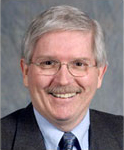How Understanding Soil Could Be One Answer to Help Save the Planet
will.ferguson
The deep, dark depths of the ocean are often called the final frontier—but, according to one researcher, the soils of the Earth are little understood as well.
Some of the soil’s mysteries could reveal how to store carbon, and maybe one day, carbon dioxide—a key greenhouse gas that is causing global temperatures to reach record-breaking temperatures. In a study published on Monday, Marc Kramer, an assistant professor of environmental chemistry at Washington State University Vancouver, digs deeper into what scientists know about soil, particularly uncovering how soil minerals are associated with carbon storage in soil.
“We know more about the surface of Mars than we do about either oceans or soils on Earth,” said Kramer.
Find out more
Newsweek
Gears of Biz
UPI
Sanvada
WSU News
Public News Service
The Inlander


 Ryan W. Booth, a Ph.D. student in history at Washington State University and member of the Upper Skagit tribe, gave his talk “They Are Always at the Front” Tuesday night at Wolff Auditorium, discussing the contributions of Native American soldiers during World War I.
Ryan W. Booth, a Ph.D. student in history at Washington State University and member of the Upper Skagit tribe, gave his talk “They Are Always at the Front” Tuesday night at Wolff Auditorium, discussing the contributions of Native American soldiers during World War I.